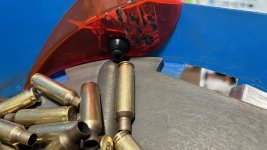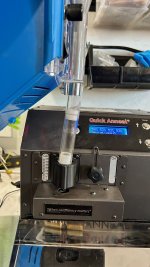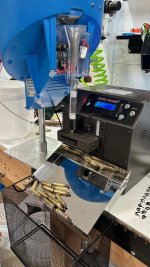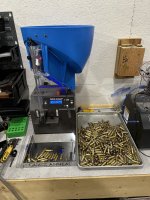Did you fail to read? If it’s liquified, it’s gone totally past being annealed. If it liquifies in ten seconds, it anneals at less than ten seconds.
Do recrystallisation and grain grown not come before liquefaction all of a sudden?
NO that's the entire point of MY discussion , Grain structure aka re-crystallization requires TIME at SPECIFIC TEMPERATURES , Which vary widely when either is substituted .
If you simply take the time to look at the article I posted by George Vandervoort .
George is one if not the Top people within the industry . I'm attempting to locate #2 additional PhD. Thesis papers published by two Indian Students ,who not only verified George's work but did extensive research and experiments to further elaborate on metallurgy and Brass in particular . ( I had a system failure a while back and in re-installing the OS, lost bookmarks and some research papers aka PDF's ) .
George Vander Voort has a background in physical, process and mechanical metallurgy and has been performing metallographic studies for 47 years. He is a long-time member of ASTM Committee E-4 on metallography and has published extensively in metallography and failure analysis. He regularly teaches MEI courses for ASM International and is now doing webinars. He is a consultant for Struers Inc. and will be teaching courses soon for them.
This is from within the accepted Industry of Metallurgical Science :
Annealing also restores ductility ,yet shouldn't be confused with partial or solution annealing (This is what WE as reloaders do )** . During cold working, the metal can become hardened to the extent that any more work will result in cracking. By annealing the metal beforehand, cold working can take place without any risk of cracking, as annealing releases mechanical stresses produced during machining ,heating, grinding or forming .
Annealing is used for steel, however, other metals including copper,aluminum and brass can be subject to a process called solution annealed.**
** NO re-crystallization occurs therefore IT'S NOT ANNEALED in the true sense of the definition .
Large ovens are used for annealing steel. The inside of the oven must be large enough to allow air to circulate around the metal. For large pieces, gas fired conveyor furnaces are used while car-bottom furnaces are more practical for smaller pieces of metal.
During the annealing process, the metal is heated to a specific temperature where recrystallization can occur. At this stage, any defects caused by deformation of the metal are repaired. The metal is held at that temperature for a fixed period, then cooled down to room temperature.
The cooling process must be done very slowly to produce a refined microstructure, thus maximizing softness. This is often done by immersing the hot steel in sand, ashes or other substances with low heat conductivity, or by switching off the oven and allowing the steel to cool with the furnace.





